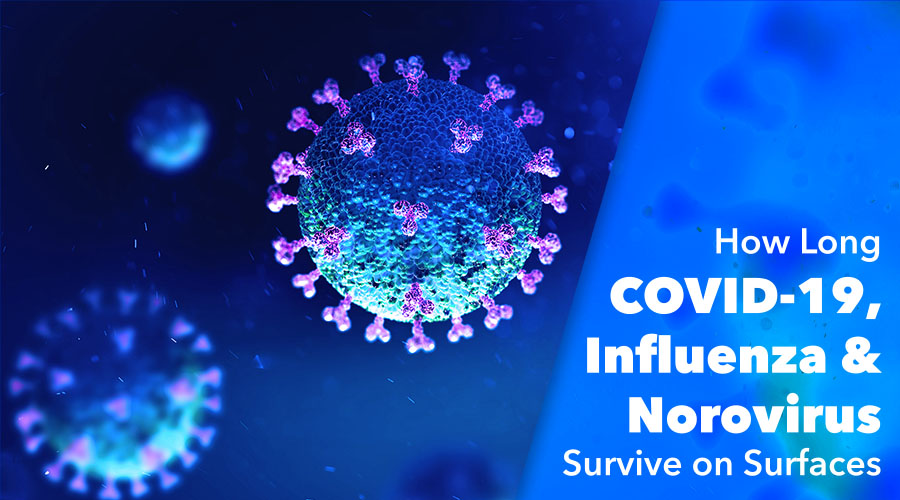Reducing the transmission of infectious diseases has never been more important than during the COVID-19 pandemic. This video series identifies where to disinfect, how to disinfect, when to disinfect, and what to use, based on evidence-based studies.
Dr. Charles Gerba, internationally-recognized microbiologist, has studied the spread of pathogens in school settings, offices, hotels and other types of facilities. This series will help facility managers develop cleaning and disinfecting protocols that will help curb the spread of COVID-19 as the Delta and Omicron variants surge. These guidelines will also be useful post-pandemic since influenza and Norovirus are also annual concerns.
- Part 1: How Long COVID-19, Influenza and Norovirus Survive On Surfaces
- Part 2: The Most Contaminated Surfaces in Schools, Offices and Hotels
- Part 3: Developing Your Infection Control Cleaning Protocols
Here’s a preview:
We’ve done studies in schools in kindergarten through 12th grade where all the germs are bacteria fecal bacteria. In particular, although we've looked at viruses, too, cafeterias seem to be on the top of the list. One of the reasons is not so much the food, but that's where kids hands are all the time. If you're in a classroom, it's the top of desktops. Desks are always contaminated because that's where your hands are. You're picking up stuff and putting it there all the time. Same thing with a computer mouse.
The toilet seat is one of the cleanest things we find actually, even in schools. In most facilities that’s because people are using disinfectants all the time. Forty percent of all American women will wipe a toilet seat with toilet paper or put paper on it or seat. People are terrified of “butt-borne” diseases and so they really clean toilets a lot.
Where do you find most of the fecal bacteria? Well it's actually the desktops of the children. This surprised us a lot and we started looking at it. You had to go down the list — computer mouse, library table, these again are where children's hands are. It wasn't until we came to number five on the list that we got to the restroom area. Again, disinfectants are used there more commonly.
What we did is actually perform a study. We got volunteer mothers to wipe the desk with disinfectant wipes after the children had left every day and we compared one set of classrooms without wipes and then we reversed them to see what the difference would make. We did see a 50 percent reduction in absenteeism. We were surprised at that statistic. We published that work in a school nursing journal. Just using disinfectant wipes had a huge impact. Of course that takes a lot of time and effort to do, but we did see an impact.





